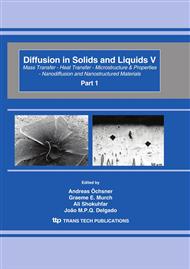p.990
p.996
p.1002
p.1010
p.1016
p.1022
p.1027
p.1037
p.1042
Collapse-Type Shrinkage’s Characteristics in Both Eucalyptus urophylla and E.cloeziana Wood under Heat-Treatment Conditions
Abstract:
In order to explore the formation process of collapse-type shrinkage of eucalypt wood, the collapse-shrinkage properties in Eucalyptus urophylla and E.cloeziana wood under different heat-treatment conditions were systematically investigated by using frozen drying, and simultaneously creative assessments on their collapse-type shrinkage process were conducted based on the novel concepts of both transient collapse and maximum transient collapse advanced for the first time. The results indicated that, for lower-density E.urophylla, total shrinkage and residual collapse under both heat-treatment regimes increased with increasing temperature. As compared to intermittent heat treatment, the above two indices at three levels of temperatures in continuous heat treatment displayed relatively larger values, and exhibited down-open-parabola type; For higher-density E.cloeziana, only higher collapse phenomenon in the part near to the pith were observed, and similar to E.urophylla, while almost slight and /or no collapse occurs in the middle heartwood and sapwood, and shrinkage and collapse in continuous heat treatment is slightly larger than those in intermittent heat treatment, and both shrinkage and collapse take on up-open-parabola type. Trends of radial variation of both parameters for both species in continuous heat treatment were consistent with those in intermittent heat treatment. It can be speculated that the mechanism of the difference in collapse-type shrinkage characteristics between two heat-treatment patterns are that the more types of cells and the more number of cells participated in the collapse development, and the more transient collapse, especially maximum transient collapse, is transformed into the permanent set to develop the residual collapse for continuous heat treatment than the intermittent heat treatment. Therefore, it is very crucial for lower-density susceptible-collapse eucalypt to manage to prevent maximum transient collapse from being transformed into permanent set in the process of drying.
Info:
Periodical:
Pages:
1016-1021
Citation:
Online since:
April 2010
Authors:
Price:
Сopyright:
© 2010 Trans Tech Publications Ltd. All Rights Reserved
Share:
Citation:


